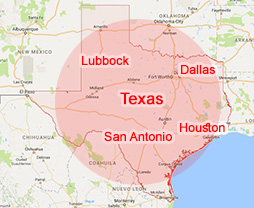Unlawful Possession of a Weapon Part 4
Back to Beechum, back to the mailman. Here we’re talking about probative value. Now, the interesting thing about probative value! Probative value is what you weigh against the undue prejudice. Probative value increases as the strength of the government’s case decreases. What? Did I hear you correctly? The weaker the government’s case is, the stronger the probative value? That doesn’t make any sense! It doesn’t make a whole lot of sense, but that’s the fact because it’s based on, its need based. The government can actually argue,” judge, we need this evidence because the rest of the case isn’t that strong! And this could make or break the case for us” The law recognizes that that increases the probative value of the evidence. So then, the weaker the government’s case the higher the probative value. Yes, strangely enough! So then probative depends on the strength of the government case. It gets stronger the government case is. It’s difficult to believe but it’s absolutely true.
So, that creates this weird ‘catch 22’. Think about it, ok? At trial, the government is arguing,” well judge, the probative value is very high because we have kind of a weak case and you know with this extraneous offense evidence it can really really make or break the case because if the rest of the case isn’t very strong, its mostly circumstantial. So you get, your client gets convicted. Right? Then you got to appeal. Now you’re over here on the appeal and on appeal the court is saying,” Well you know…yeah they shouldn’t have been let in” but its harmless error because the evidence was so strong otherwise that it doesn’t make any difference. So over here the government is arguing that the evidence is weak to increase its probative value and over here the government is arguing that the rest of the evidence is strong to make it harmless error. It’s this really weird ‘catch 22’ be aware of it.
Okay. Balancing test! Undue prejudice! Alright! I had this case recently, and it’s one of those cases you dream for, that you dream about. It’s an archetypal type of criminal defense case. I had one guy who was federally indicted for conspiracy to possess with intended to distribute marijuana. And he had an identical twin brother who had an arrest for transporting cocaine. And his identical twin brother and he shared the same name. In other words, their parents named both twins the same thing. And not only, that they both spoke, with a stutter! Ok. So, I’ve set up the story. My client gets stopped near Laredo passenger and a driving a tractor with a trailer, full of marijuana. They dismissed the case because my client doesn’t say anything, he keeps his mouth shut. They dismissed the case. 2 months later we get re-indicted. Why did he get re-indicted? Well, because they found some 2 year old case in New Jersey where supposedly my client had been recorded, audio recorded and video recorded talking to a confidential informer. So that it’s very clearly no question about an extraneous offense. And, they really couldn’t have built their case against my twin without that evidence, and they knew that! Because they dismissed it until they had that evidence.
So, they try and bring in that evidence, but remember they had an audio recording and a video recording but, and they had a name. But it’s the same name and he’s a twin and I didn’t know how they were going to prove that it wasn’t the other twin who had an arrest for transporting cocaine. They didn’t know how they were going to prove it either. But they try to get it in anyway. And so, we argued undue prejudice! Clearly it was an extraneous offense. Clearly it was probably relevant. I argued against the relevance but it was probably going to come in on relevance but I really pushed this undue prejudice issue; what would have to be done in order to bring in this extraneous evidence. Well, there was going to have to be a bunch of witnesses, all traveling from New Jersey. We’re going to probably double the amount of the trial because we’re going to have a whole other trial on the offense that occurred in New Jersey. We are going to have issues of identification, eye-witness identification, finger printing things like that. It was going to create a lot of confusion it was going to create more issues for the jury and if we ran the writ the jury might think the accused had escaped justice in the past!
So, these are all the things that all of the other issues that were created by this extraneous offense. Now, unfortunately or fortunately I guess we never got to litigate the issue because once they, once we went back and forth with the memorandum on 404B the government decided to dismiss the case. So, it never got to be litigated but these were the things that I was pushing on that case. And I never had a case bring up these 404 prejudice issues more starkly than this one. So that’s an example of how the balancing test works. So how did we go from old days where that overriding policy was excluding such evidence despite its admitted probative value that’s US Supreme Court 1948 in Michelson US? Then 30 year later, 1978 we have Beechum where it says,” the extraneous effect bore directly on the plausibility of the defendants story; justice called for its admission”. That’s a huge pendulum swing in the span of 30 days, 30 years rather!






